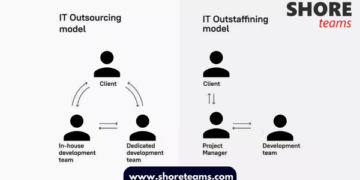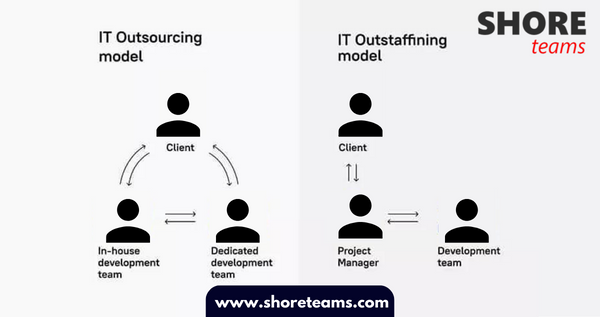We all are well versed with the terms ‘Outsourcing’ and ‘Outstaffing’. These are often thrown around when discussing new strategies to grow a business. But, while they sound similar, there are some critical differences between the two that business owners should be aware of. Knowing the distinctions between outsourcing and outstaffing can help your business choose the right approach for your needs and avoid costly mistakes.
In this article, we will examine the seven key differences between outsourcing and outstaffing and explain what each means. By considering all seven factors, you will gain a better understanding of Outsourcing vs Outstaffing and be able to decide which one is right for your business. Let’s have a look!
Differences to Know
-
Outsourcing Involves Handing Over Control
Outsourcing transfers control of a specific business process, service, or product to an outside company. This means that the company would be responsible for all aspects of the project, from development to maintenance.
When outsourcing, the company is essentially handing over control of the process, service, or product to the other company. The other company then has complete control over how it’s managed.
-
Outstaffing Retains Control
Outstaffing, on the other hand, refers to hiring a team of remote employees to complete a specific project or task. Unlike outsourcing, outstaffing gives the original hiring company control over its team of employees
The company can monitor their progress and assign tasks as required. This gives the business more control over its project, as it can make changes or adjust the team as needed.
-
Outsourcing Is More Costly
Outsourcing is typically more expensive than outstaffing. This is because you pay for the entire process or service with outsourcing, and you are paying for the time and resources required to develop and maintain the project rather than just the cost of a team of employees.
As such, outsourcing is a better option for businesses with large projects and who want to enlist the help of experts.
-
Outstaffing Is More Cost-Effective
Outstaffing is typically a more cost-effective option for businesses as you are only paying for the cost of the team and their labor. This makes it a great option for businesses that need a team of employees to complete a project but don’t want to pay for the full development and maintenance.
It also allows businesses to scale their team up or down as needed, allowing them to remain flexible and adjust their project costs.
-
Outsourcing Is More Flexible
Outsourcing is typically seen as the more flexible option, allowing the original hiring company to hand off the entire project or service to the other company. This allows them to focus their time and resources on other projects while the process is still managed effectively.
It also allows businesses to scale up or down their project as needed, as the other company can quickly adjust the resources and time allocation accordingly.
-
Outstaffing Is Ideal for Short-Term Projects
Outstaffing is particularly well-suited for short-term projects as businesses can quickly scale their team up or down. It also offers businesses more control over their project, as they can monitor their team’s progress and adjust as required.
This makes outstaffing a great option for businesses needing a team of employees for a specific project but not wanting to commit to a longer-term agreement.
-
Outsourcing and Outstaffing Have Different Tax Implications
The last key difference between outsourcing and outstaffing is the tax implications. With outsourcing, the original hiring company is responsible for the taxes of the other company. With outstaffing, however, the original hiring company is responsible for the taxes of their employees. It’s important to be aware of the tax implications of both options, as this can have a major impact on the costs involved.
To Wind Up
In conclusion, now that you better understand the seven key differences between outsourcing and outstaffing, you can make a more informed decision as to which option is best for your business. As you can see, both options can be beneficial in different ways, but it’s important to consider all the factors before deciding. By understanding the differences between outsourcing and outstaffing, you can ensure you choose the right approach for your business and avoid costly mistakes.







































